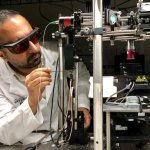
Article • Imaging
Photoacoustic technology could 'revolutionize' cancer surgery
Cancer treatment could be dramatically improved by an invention at the University of Waterloo to precisely locate the edges of tumors during surgery to remove them.

Cancer treatment could be dramatically improved by an invention at the University of Waterloo to precisely locate the edges of tumors during surgery to remove them.

The Geneva University Hospitals (HUG) is the first European university hospital to utilize IBM’s artificial intelligence (AI) technology to help uncover therapeutic options for cancer patients. HUG will use the IBM Watson Health’s precision oncology offering, Watson for Genomics, an AI tool that enables oncologists to provide patients with more personalized, evidence-based cancer care. Using…

La Fe University and Polytechnic Hospital in Valencia, Spain, is coordinating EU-funded program PRIMAGE, which uses precision information from medical imaging to advance knowledge of the most lethal paediatric tumours, by establishing their prognosis and expected treatment response using radiomics, imaging biomarkers and artificial intelligence (AI).

In terms of success in revolutionary cancer treatment, molecular genetic examination procedures have developed immensely over recent years. They now range from conventional polymerase chain reactions (PCR) or fluorescence-in-situ hybridisation (FISH) to Next Generation Sequencing (NGS) with analysis of the entire exome or genome (Whole-Exome, WES or Whole-Genome, WGS) and of the transcriptome…

Professor Regina Beets-Tan has been appointed to the mission board of the EU research mission on cancer, part of the European Commission’s research initiative known as Horizon Europe. She has been selected to serve on the 15-member board for the cancer mission, tasked with shaping their mission and further defining what research receives funding within the cancer mission’s mandate, beginning…
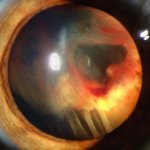
Researchers identified how to kill therapy-resistant cells in hypoxic tumors and in cells arising in the von Hippel-Lindau hereditary cancer. In a recent publication in PNAS, the research group identified how to kill therapy-resistant cells in hypoxic tumors and in cells arising in the von Hippel-Lindau (VHL) hereditary cancer.
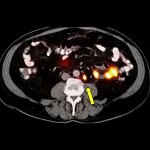
Prostate-specific membrane antigen imaging should be the positron emission tomography imaging agent of choice for men who have a prostate cancer recurrence after radical prostatectomy, which needs to be detected and located. For these men, it should become the standard of care, new research shows.

Nurses’ knowledge of cancer and screening processes varies significantly across the globe – potentially resulting in unnecessary deaths where knowledge falls short – new research reports. It is therefore vitally important to assess varying levels of knowledge in nurses across the world, a new study led by researchers from the University of Surrey reports.
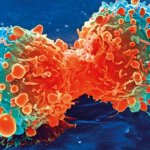
Cancers with the same genetic weaknesses respond differently to targeted drugs depending on the tumour type of the patient, new research reveals. The study is set to prompt changes in thinking around precision medicine—because it shows that the genetics of a patient's cancer may not always be enough to tell whether it will respond to a treatment. The researchers are already starting to design…

Immuno-oncology is a therapy in which the body’s immune system treats a tumour. Dr Eric Borges, from the Research and Development Centre at Boehringer Ingelheim Pharma GmbH in Germany, explains why this is revolutionary. Unlike conventional cancer therapies, with immuno-oncology the tumour cell is not the direct target, it’s the patient’s immune system. The medication stimulates this to…

An anti-inflammatory drug called ketorolac, given before surgery, can promote long-term survival in animal models of cancer metastasis, a team of scientists has found. Furthermore, so-called "pro-resolution" therapies can also trigger the immune system to eliminate metastatic cells. The research also suggests that flanking chemotherapy with anti-inflammatory drugs can unleash anti-tumor…

Wilmot Cancer Institute scientists believe they have figured out why a commonly used drug to treat late-stage prostate cancer often stops working after four or five months and appears to have a dual function that later turns the cancer into a relentless aggressor.
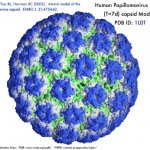
An international group of researchers has found that antibodies to the human papilloma virus type 16 (HPV16) develop in the body between six to 40 years prior to a clinical diagnosis of throat cancer, and their presence indicates a strong increased risk of the disease.

Doctors could soon get some help from an artificial intelligence tool when diagnosing brain aneurysms—bulges in blood vessels in the brain that can leak or burst open, potentially leading to stroke, brain damage or death.

IBA (Ion Beam Applications S.A.) announces the launch of myQA iON at the 2019 PTCOG conference. myQA iON significantly reduces the time needed for patient QA: The use of PT machine log files, process automation, task-based workflows, and the latest web technologies significantly increase QA efficiency while ensuring patient treatment safety. Compared to conventional detector measurements (at…

We all know someone affected by the battle against cancer. And we know that treatments can be quite efficient at shrinking the tumor but too often, they can’t kill all the cells, and so it may come back. With some aggressive types of cancer, the problem is so great that there is very little that can be done for the patients.

A new targeted therapy using non-thermal radio waves has been shown to block the growth of liver cancer cells anywhere in the body without damaging healthy cells, according to a study conducted by scientists at Wake Forest School of Medicine, part of Wake Forest Baptist Health.

A novel imaging technique that uses a synthesized form of scorpion venom to light up brain tumors has shown promise in a clinical trial. The imaging system enables neurosurgeons to better see malignant growths that often are difficult to fully eliminate.

Medical physicists at the University Hospital Carl Gustav Carus, Dresden (Germany) announce the beginning of a new era in treatment planning: In a worldwide first, a new approach increases the accuracy, safety and probably also the tolerability of proton therapy.

Scientists from King's and Cambridge have developed a catalogue of DNA mutation ‘fingerprints’ that could help doctors pinpoint the environmental culprit responsible for a patient’s tumour – including showing some of the fingerprints left in lung tumours by specific chemicals found in tobacco smoke. Our DNA, the human genome, comprises of a string of molecules known as nucleotides. These…
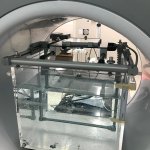
IBA (Ion Beam Applications S.A.), the world’s leading provider of proton therapy solutions and radiation therapy integrated quality assurance (QA) for the treatment of cancer, announces the successful commissioning of the Varian Halcyon at the Radiation Oncology Center at MedStar Southern Maryland Hospital Center, based on IBA Dosimetry independent beam scanning solution. IBA has designed myQA…

Dr Georg Ralle, General Secretary of the association ‘Network against Colon Cancer’ since 2012 as well as moderator of the symposium ‘The New Measurement of Oncology’, hosted by the National Centre for Tumour Diseases Heidelberg (NCT), clearly voices his dissatisfaction with the German ‘wait it out mentality’. He sharply criticised the Federal Joint Committee (G-BA) and here also…

It has long been thought that stress contributes to cancer progression. Scientists from the University of Basel and the University Hospital of Basel have deciphered the molecular mechanisms linking breast cancer metastasis with increased stress hormones.

Shahid Umar, PhD, researcher with The University of Kansas Cancer Center, has dedicated two decades of his scientific exploration to better grasp the connection between colon cancer and the human microbiome. Called the “forgotten organ,” the microbiome comprises trillions and trillions of microbes, including bacteria, fungi and viruses, in our body.

Test more accurately identifies four mutations for which FDA-approved drugs exist and offers faster turn-around time between initial testing and commencement of therapy.